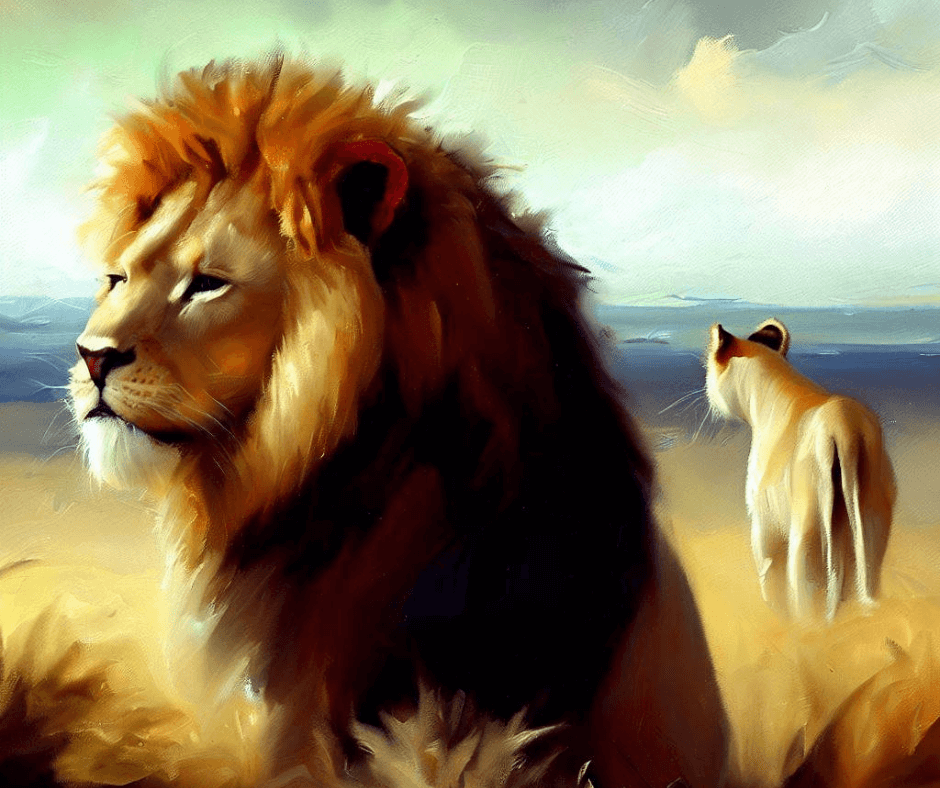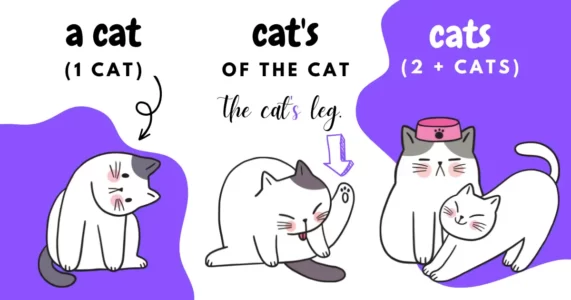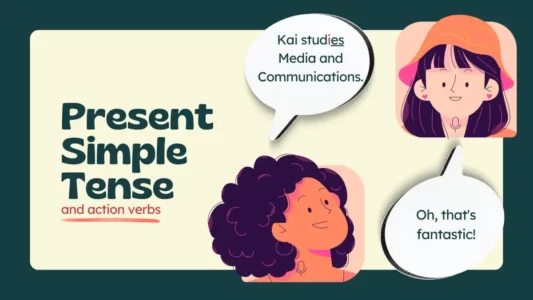Introduction
The challenges the English personal pronoun it can present to new learners are not immediately obvious. Regardless of the reasons, it is true that, depending on the background of your learners, the pronoun it in English may pose problems. Let’s try to address some of them on this page.
Usage
The personal pronoun it can stand for several things in English. In other languages, especially those with grammatical gender, that is not the case, and for beginner English learners, the concept of it can be hard to understand.
In languages like Spanish, French, Russian, and Bulgarian, to mention a few, that is not so. Spanish and French have a binary grammatical gender system, differentiating masculine and feminine. That means all nouns, adjectives, determiners, and pronouns in these languages are assigned one of two genders.
In Spanish, the masculine gender is generally marked with the suffix -o, while the feminine – with -a. There are many exceptions, and you can’t always predict the gender of a noun by looking at its ending. For example, the word día (day) is masculine, while mano (hand) is feminine.
In Bulgarian, masculine nouns often end in consonants, while feminine nouns often end in -a or -я. Neuter nouns often end in -o or -e. For example, the word град (city) is masculine, the word жена (woman) is feminine, and дете (child) is neuter.
In the Russian language, the situation is similar. For example, the word город (city) is masculine, the word женщина (woman) is feminine, and the word солнце (sun) is neuter.
Note! There are always exceptions to grammatical gender in the above languages.
The above means that when used in sentences, there has to be gender agreement between different parts of the sentence, for example, with adjectives:
- masculine
- Spanish: día largo
- Russian: длинный день
- Bulgarian: дълъг ден
- feminine
- Spanish: noche larga
- Russian: длинная ночь
- Bulgarian: дълга нощ
While English is not as complicated as that, for new learners whose native language has grammatical gender, the concept of it may be confusing and overwhelming at first. To clear the air, here is a summary, including some examples, about what the pronoun it can stand for in English.
Inanimate objects
In general, we use the pronoun it to refer to anything that is not a person. Therefore, it stands for inanimate objects in English.

That is the Sahara Desert. Did you know it is the world’s largest hot desert and covers most of northern Africa?
- The computer doesn’t work. I need to fix it.
- The book was on the table. I saw it.
- The door was open, so I closed it.
- I dropped my pen, and now I can’t find it.
- I bought a new phone. It‘s so much better than the old one.
Here is how this can be different in other languages:
| English | Russian |
| Where is the book? It’s on the table? (neutral) | Где книга? Она на столе. (fem.) |
However, there are instances where inanimate objects are personified and given gendered pronouns for poetic purposes. Here are a few examples:
Ships
In literary or poetic contexts, ships are sometimes personified and referred to as “she” or “her.” For example:
- The ship hid in the distance as she glided through the water.

“I must go down to the seas again, to the lonely sea and the sky,
And all I ask is a tall ship and a star to steer her by.”
There is no definitive answer as to why sometimes ships are referred to as she and her, perhaps it’s a combination of reasons:
- Influence from other languages. In Latin, for example, the word “ship” (navis) has feminine grammatical gender.
- The fact the sailor saws ships as their protective power at sea (like a motherly figure)
- Ships were seen as beautiful and graceful and were given female names. For example, Queen Mary, Queen Elizabeth II, etc.
Countries
Again, in specific contexts, countries are assigned the female gender because they are often seen as the Motherland.
- England is proud of her history.

“God bless America
Land that I love
Stand beside her and guide her
Thru the night with a light from above.”
“God Bless America” by Irving Berlin
Cars
In informal language, some people (specifically men) may refer to their cars using gendered pronouns, although this is not universal. For example:
- My car, isn’t she a beauty?*
*The above examples exist in the language but are rarely used in modern communication. Some of these may be considered offensive. It is best to use the neutral pronoun it when talking about inanimate objects in English.
Animals and other living beings
Even though animals can move on their own and are not inanimate objects, they take the pronoun it in English (with some exceptions).

That is a blue whale.
It is the largest animal in the world.
- There was a spider in the room, and I tried to catch it.
- I saw a rabbit in the garden, and it hopped away into the bushes.
- I saw a squirrel in the park. It was eating a nut.
- The dog wagged its tail happily when it saw its owner coming home.
Other examples:
- The cactus is a unique plant. It can store water in its stem and thrive in the desert.
- Don’t eat that mushroom! It‘s toxic!
How would the last example look in Bulgarian?
| English | Bulgarian |
| Don’t eat that mushroom! It’s toxic! (neutral) | Не яж тази гъба! Oтровна е! (fem.) |
Many mammals are either he or she based on their gender. For example, male dogs/ cats may be referred to as he and female dogs/ cats as she. That is especially so with our pets. They are part of our families, and we give them names and refer to them as he/ him/ his or she/ her/ hers.
- My dog Lily wagged her tail happily when she saw me coming home.
Farm and wild animals
While the chicken is it, the rooster is a he, and the hen is a she.
- A rooster cannot lay eggs but he can wake the whole farm. 😎
Some other animals that have distinct males and females include:
- Horse: stallion (he) and mare (she)
- Cow: bull (he) and cow (she)
- Duck: drake (he) and duck (she)
- Lion: lion (he) and lioness (she)
- Tiger: tiger (he) and tigress (she)

The lion is a majestic animal. He is known for his loud roar, which can be heard from afar. The lioness is a skilled hunter. She hunts for food and takes care of the cubs.
- The lioness is a skilled hunter. It hunts for food and takes care of the cubs. ❌
Time and weather
To talk about weather conditions, we use the pronoun it in English. That is not always the case in other languages.
- It rains a lot in England.
- It is cold outside.
- The wind is strong today. It almost broke a tree two blocks away.
- It’s a beautiful day.
- It’s sunny and warm.
| English | Russian |
| It is cold outside. | На улице холодно. (no pronoun) |
Because time is a non-human entity but rather an abstract concept, when talking about time, we use it.
- It is already 9 o’clock.
- I can’t believe it‘s Monday tomorrow.
- It took us two hours to finish the project.
- I’m going to take a break; it‘s lunchtime.
- It‘s late, and I need to go to bed.
A group of people or things
It’s possible to use the pronoun it to refer to a group of people or things when we want to emphasize the collective entity as a whole rather than the individual members within the group.

There was a group of people in the mist. It moved slowly and monotonously as if without purpose or direction.
- The Australian shepherd can keep a herd united and guide it across the fields.
- She received a new set of furniture. It‘s better than what she had before.
- We saw a collection of paintings from the 18th century, and it was impressive.
- The club organized a fundraising event. It raised a lot of money.
- The team had a hard time, but it managed to win.
- I have a collection of unique post stamps. It‘s huge.
However, in these cases, it is also common to use other personal pronouns depending on who is speaking and whether or not they are a part of the group.
- I saw a group of people in the mist. They moved slowly and monotonously as if without purpose or direction.
- The club organized a fundraising event. They raised a lot of money.
- The team had a hard time, but we/ they managed to win.
An (abstract) concept
When referring to different abstract concepts in English, we use the pronoun it.
“Love is like the wind, you can’t see it, but you can feel it.”
― Nicholas Sparks, “A Walk To Remember”
- Justice is important for a fair society: it ensures that everyone is treated equally.
- Knowledge is empowering – it lays the path to new opportunities.
- The only thing that really matters is freedom. We should cherish and protect it. Not just for our own sake but for everyone else’s.
And again, that is not always the case in other languages. In French and Spanish, for instance, the word for love is amour/ amor, and it is masculine. In Russian and Bulgarian, on the other hand, it is любовь/ любов, and it has feminine grammatical gender. In Spanish, where el and lo indicate the masculine grammatical gender, the quote about love above would sound like this:
- El amor es como el viento, no puedes verlo, pero puedes sentirlo.
A baby or young child
When the gender of a baby is not known or is not relevant, we use the pronoun it to refer to babies and children.
- Look, it‘s a cute baby!
- The baby is sleeping. It looks so peaceful.
- My sister just had a baby, and it‘s a boy.
- The child is playing with its toys in the living room.
- I saw a child in the park. It was running around playing with the pigeons. It was so cute.
Does your native language have grammatical gender, and what gender are the words love, peace, and justice? Share below! 💚


